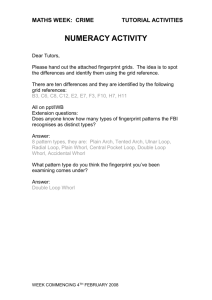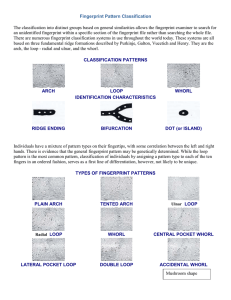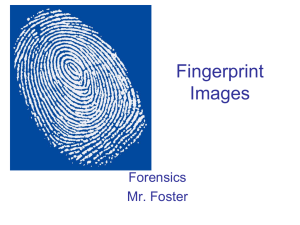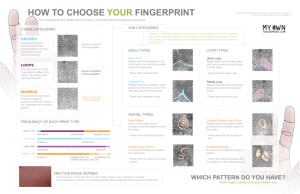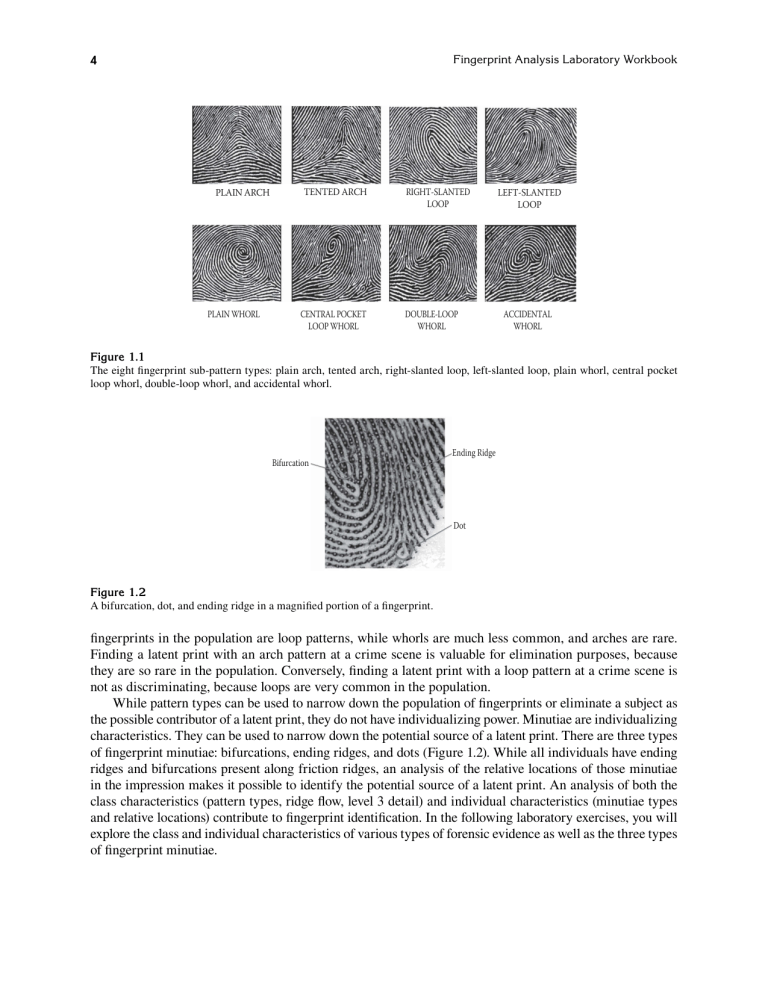
Fingerprint Analysis Laboratory Workbook 4 PLAIN ARCH PLAIN WHORL TENTED ARCH CENTRAL POCKET LOOP WHORL RIGHT-SLANTED LOOP DOUBLE-LOOP WHORL LEFT-SLANTED LOOP ACCIDENTAL WHORL Figure 1.1 The eight fingerprint sub-pattern types: plain arch, tented arch, right-slanted loop, left-slanted loop, plain whorl, central pocket loop whorl, double-loop whorl, and accidental whorl. Bifurcation Ending Ridge Dot Figure 1.2 A bifurcation, dot, and ending ridge in a magnified portion of a fingerprint. fingerprints in the population are loop patterns, while whorls are much less common, and arches are rare. Finding a latent print with an arch pattern at a crime scene is valuable for elimination purposes, because they are so rare in the population. Conversely, finding a latent print with a loop pattern at a crime scene is not as discriminating, because loops are very common in the population. While pattern types can be used to narrow down the population of fingerprints or eliminate a subject as the possible contributor of a latent print, they do not have individualizing power. Minutiae are individualizing characteristics. They can be used to narrow down the potential source of a latent print. There are three types of fingerprint minutiae: bifurcations, ending ridges, and dots (Figure 1.2). While all individuals have ending ridges and bifurcations present along friction ridges, an analysis of the relative locations of those minutiae in the impression makes it possible to identify the potential source of a latent print. An analysis of both the class characteristics (pattern types, ridge flow, level 3 detail) and individual characteristics (minutiae types and relative locations) contribute to fingerprint identification. In the following laboratory exercises, you will explore the class and individual characteristics of various types of forensic evidence as well as the three types of fingerprint minutiae.
